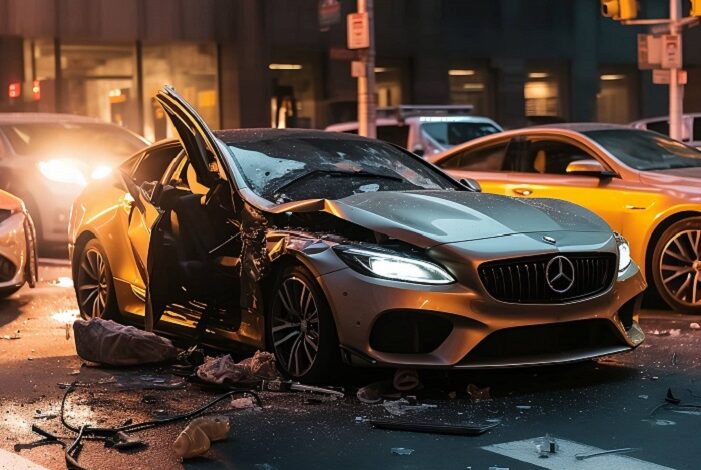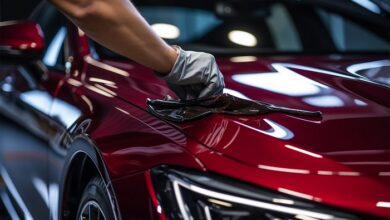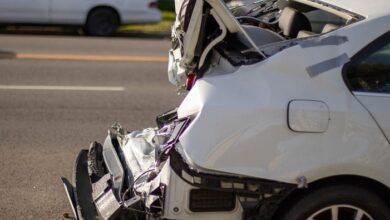T-Bone Car Accident: What To Do And How To Stay Safe?

A T-bone car accident, also known as a side-impact collision, is one of the most dangerous types of crashes on the road. This kind of accident happens when the front of one vehicle hits the side of another, forming a “T” shape. These collisions can cause serious injuries or even death due to the direct impact on the side of the car, where there’s less protection for passengers.
In this post, I’ll break down everything you need to know about T-bone car accidents, including common causes, injuries, legal steps, and ways to avoid them.
What Causes T-Bone Car Accidents?
T-bone accidents usually happen at intersections, but they can occur anywhere vehicles cross paths. Here are some of the most common causes:
- Running a Red Light or Stop Sign
One driver may ignore traffic signals or signs, leading to a collision with another car that’s driving legally through the intersection. - Distracted Driving
If a driver is texting, talking on the phone, or not paying attention, they may miss crucial signs or signals and crash into another vehicle. - Speeding
A speeding driver may not be able to stop in time at an intersection, which can cause a T-bone collision. - Failure to Yield
Sometimes, drivers don’t give the right of way when making turns or crossing intersections, which can lead to these types of accidents.
Common Injuries in a T-Bone Accident
Since T-bone crashes typically involve a vehicle hitting the side of another, the injuries can be severe. The side of a car doesn’t provide as much protection as the front or rear, which can make these accidents particularly dangerous. Common injuries include:
- Head and Brain Injuries
Impact to the head can lead to concussions or traumatic brain injuries (TBI). - Spinal Cord Injuries
The force from the crash can cause serious back and neck injuries, sometimes leading to paralysis. - Broken Bones
The ribs, arms, and legs are especially vulnerable during a T-bone collision. - Internal Injuries
The force of the crash can also damage internal organs, which may not be immediately noticeable but can be life-threatening.
Who’s at Fault in a T-Bone Car Accident?
Determining fault in a T-bone accident is not always straightforward. It depends on who had the right of way at the time of the crash. In most cases, one of the drivers violated traffic laws, like running a red light or failing to yield, making them responsible for the accident.
Police Reports and Witness Statements are crucial in these situations to figure out who caused the crash. If you’re involved in a T-bone accident, make sure to gather as much information as possible to help with the investigation.
Legal Steps After a T-Bone Accident
If you’ve been involved in a T-bone accident, you may be entitled to compensation for your injuries and damages. Here are the steps you should follow:
- Call 911
Get medical help and notify the police immediately. - Gather Evidence
Take pictures of the accident scene, the damage to the cars, and your injuries. Get witness information if possible. - Seek Medical Attention
Even if you don’t feel hurt right away, it’s important to get checked out by a doctor. Some injuries, like internal damage or whiplash, may not show symptoms immediately. - Contact Your Insurance Company
Report the accident to your insurance company as soon as possible. Be honest, but avoid admitting fault, as that can be used against you later. - Consider Legal Action
If the accident wasn’t your fault, you may want to consult a personal injury lawyer to help you with your case. They can help you seek compensation for medical bills, lost wages, and pain and suffering.
How to Avoid T-Bone Accidents
While you can’t control how other drivers behave, there are a few things you can do to reduce your chances of being involved in a T-bone accident:
- Follow Traffic Signals
Always obey red lights and stop signs, even if you’re in a hurry. - Check for Distracted Drivers
Before crossing an intersection, take an extra second to check for drivers who might not be paying attention. - Slow Down at Intersections
Even if you have the right of way, slowing down can give you more time to react if someone runs a red light. - Install Safety Features
If possible, choose a vehicle with side airbags and crash detection technology to help minimize injuries if a T-bone crash occurs.
Conclusion
A T-bone car accident can be a frightening and dangerous experience, but understanding the causes, risks, and legal steps can help you navigate the aftermath. The best way to avoid these accidents is by being cautious at intersections, always following traffic laws, and staying aware of other drivers.
If you’re ever involved in a T-bone accident, prioritize your safety first and then take the necessary steps to protect yourself legally and financially.





